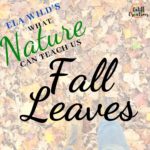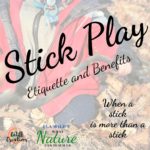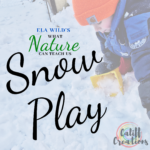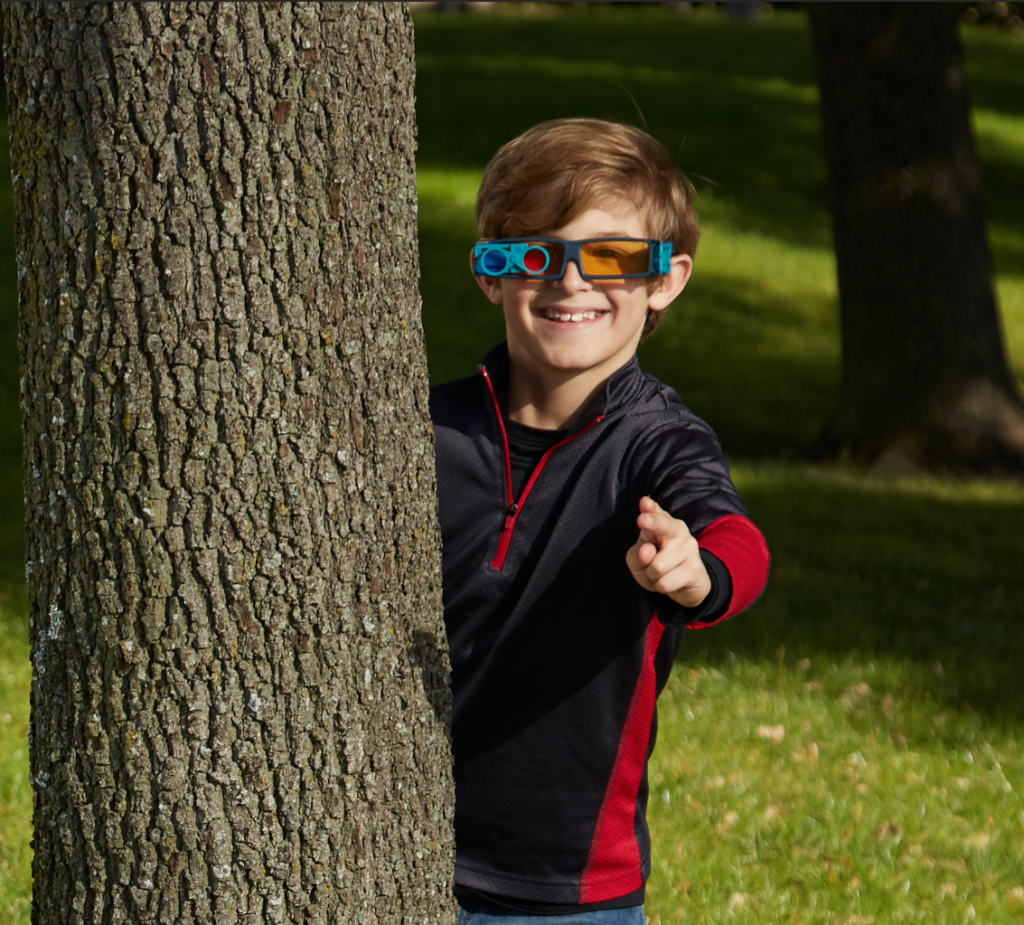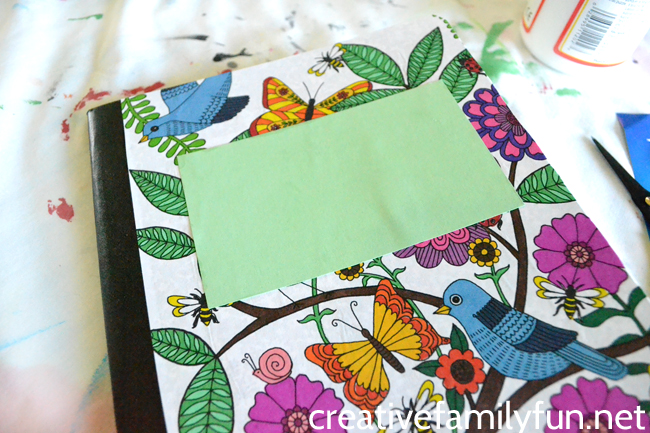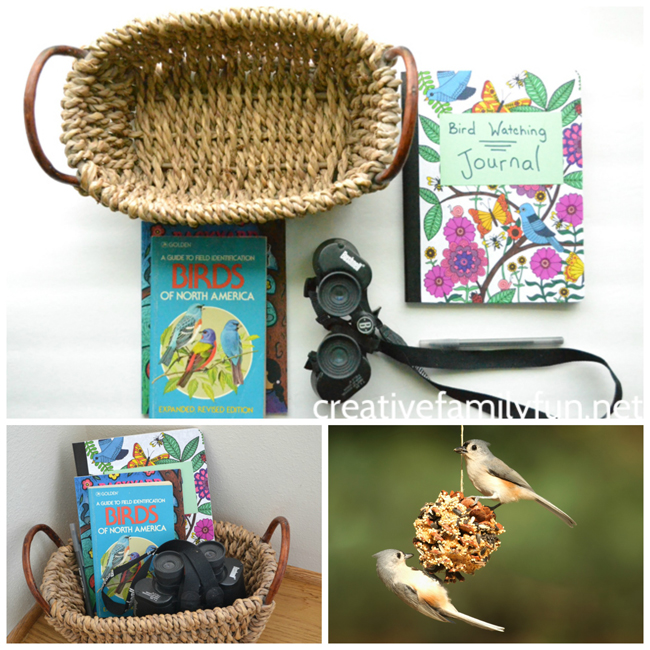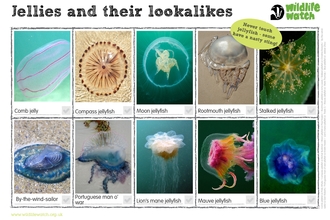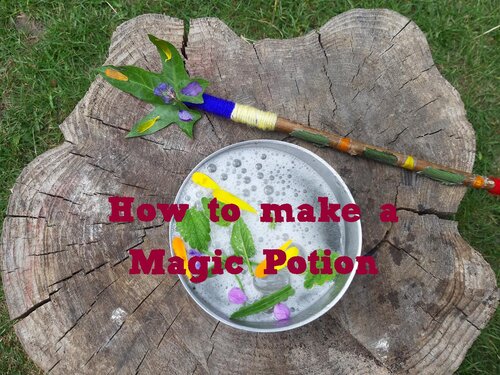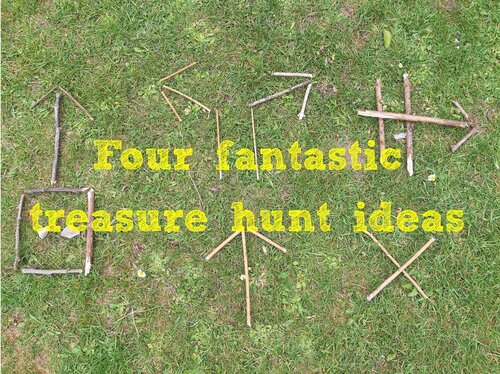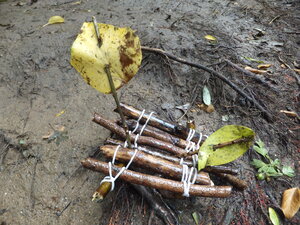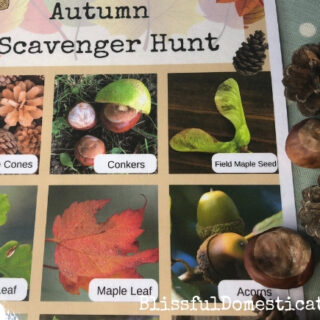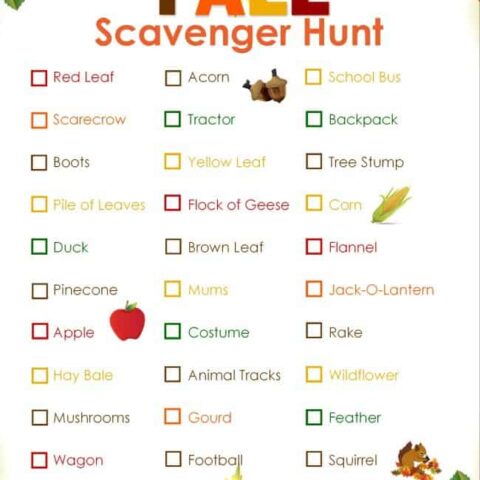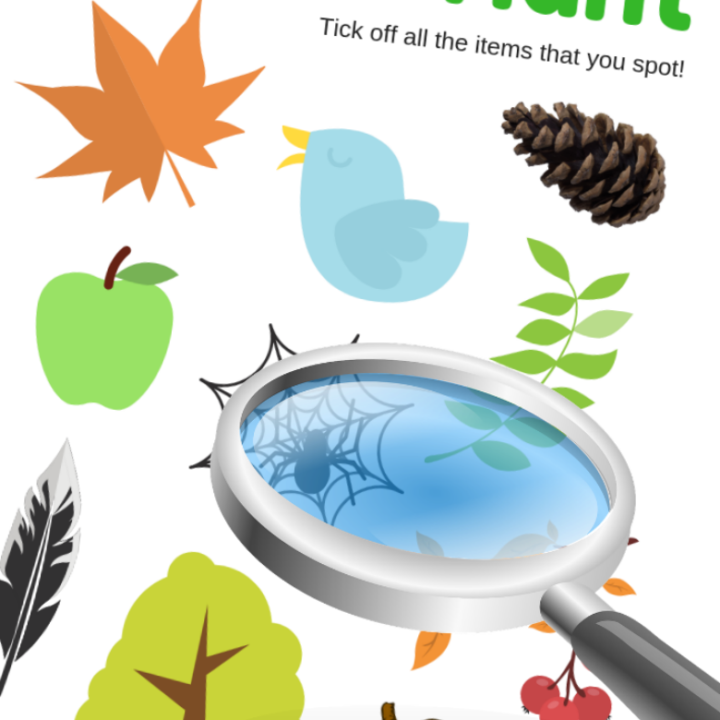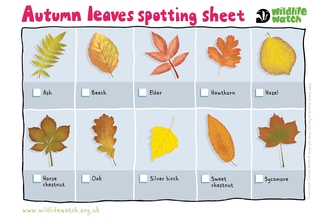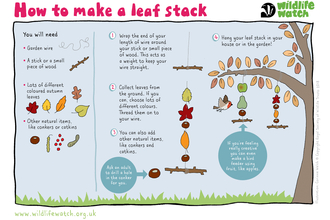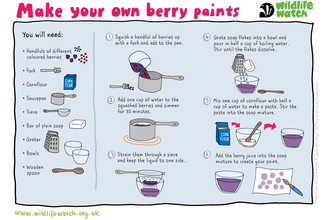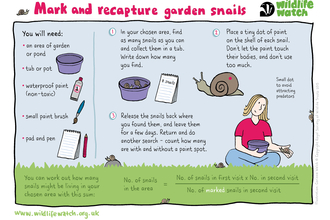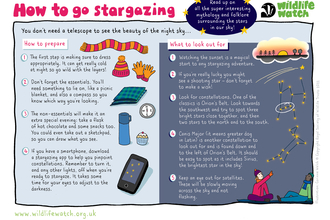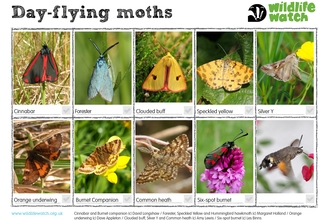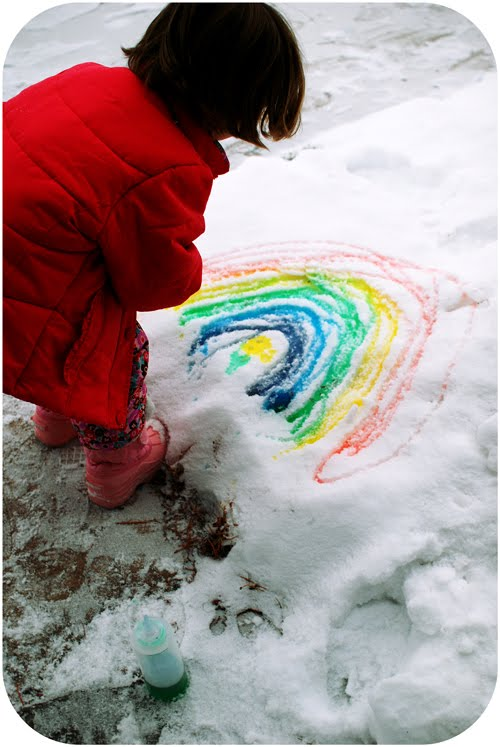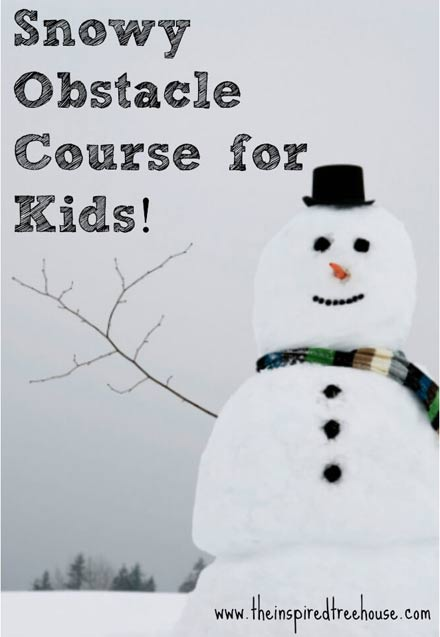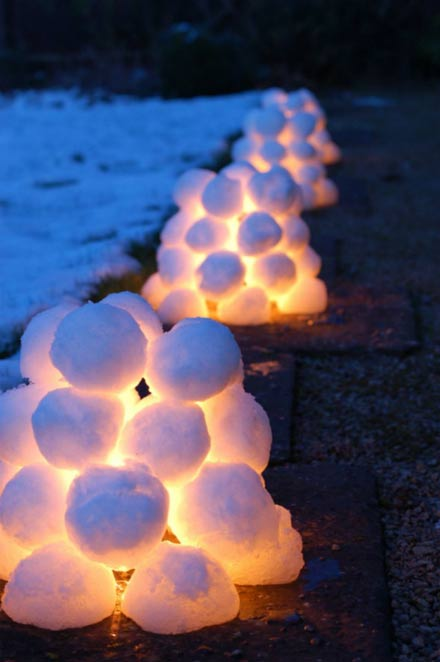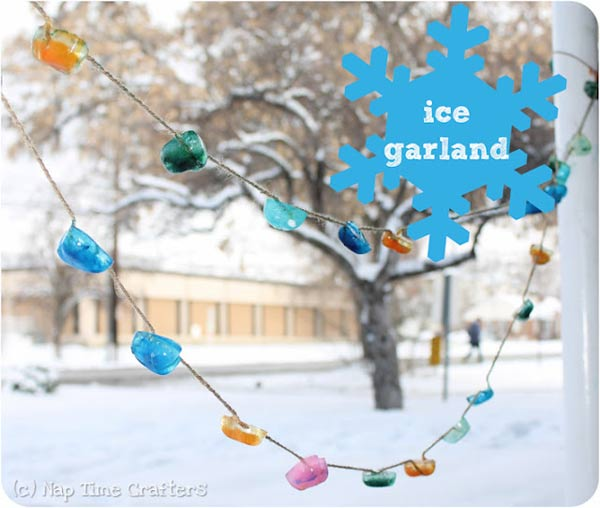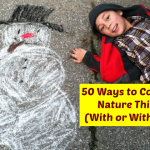Spring

HUGE list of 100 fun things to do in Spring - a great FREE printable bucket list of activities for kids & adults to enjoy together!

Step outside, enjoy the fresh air and have great family time with some of these fun spring activities for families. From exploring nature, and homemade bird feeders, to scavenger hunts, and family art projects together, there's something here for everyone.

25 Earth Day Activities
Earth day is a day to get outside, enjoy nature, and do some good. It happens on April 22nd of every year and helps to raise awareness about environmental issues. There are some…

Outdoor Spring Nature Activities
Spring is the best time to get outside! We’ve been looking for signs of spring and fun Spring Nature activities we can do outdoors in the garden. As we turn a corner from Winter to Spring, it’s fun to look out for things to occupy the kids in the garden and activities for them to…
Explore Nature in Spring- Outdoor Activities for Kids
I know the rest of the world thinks that Spring begins on March 20th with the Spring Equinox but for us, Spring activities begin the day we turn back the clocks and gain that extra hour of daylight. Ahh… dinner during daylight hours Heading to the park after dinner The sounds of birds in the …
20 Inspiring Nature Activities for Kids
When I was young, I can remember spending hours outdoors — hiking to the woods behind our house, looking in the creek for crayfish and tadpoles, scouting out which animals were running around the yard. And I can clearly remember the smell of the lilac trees when they started to bloom! I would ask my …

Fun Spring Sensory Play activities for preschoolers
Need some messy play and Spring sensory play inspiration? Spring is a lovely season and it’s is all about the senses, with new life, things beginning and one-of-a-kind textures. Spring sensory activities for preschoolers are the perfect way to usher in Spring and enjoy the new season with your little ones! Here are some of…
READ MOREFUN SPRING SENSORY PLAY ACTIVITIES FOR PRESCHOOLERS

Hapa Zome – A fun flower craft for Spring
Over the Spring half term, whilst we were playing out in the garden looking for something to do, we gave Hapa Zome a whirl. Hapa Zome is the Japanese term for beating (or tapping really) leaves or flowers with hammers, pounding their natural pigment into cloth. Hapa Zome is essentially just banging a stone on…

Spring-a-ling: time in the garden
By
22/04/2018
And I thought spring needed perhaps a little encouragement to come our way… and then it was here in a brief flurry and forgot it’s role and almost became summer! How funny it is to think it was only a few weeks ago that we had snow! I absolutely adore the changing of the seasons……
READ MORESPRING-A-LING: TIME IN THE GARDEN

Dandelion Wishes Spring Flower Keyrings
Looking for ways to use up the little nature trinkets that your little people collect? Have a go at making some Dandelion Wishes Spring Flower Keyrings! Or a craft for kids to make with their collected flowers? This is such a quick little craft to make with Dandelion wishes and Spring Flowers and particularly suited to…
READ MOREDANDELION WISHES SPRING FLOWER KEYRINGS

How to Make an Spring Easter Wreath
I really fancied making something spring-like this month, that made me feel like the seasons had changed and Easter was just around the corner, so I opted for a spring wreath. I had a failed attempt at making a Christmas wreath and had lots of bits and bobs left over from these Christmas Baubles, so decided…
READ MOREHOW TO MAKE AN SPRING EASTER WREATH

Mud Kitchen Play Ideas for Kids
Last year, my kids got a mud kitchen for Christmas from their lovely grandparents. It’s been a very well played with and it’s probably one of our Favourite Nature Gifts for Outdoorsy kids so i thought I’d write a list of the best Mud Play Kitchen Ideas, all about things the kids love to play with in their…
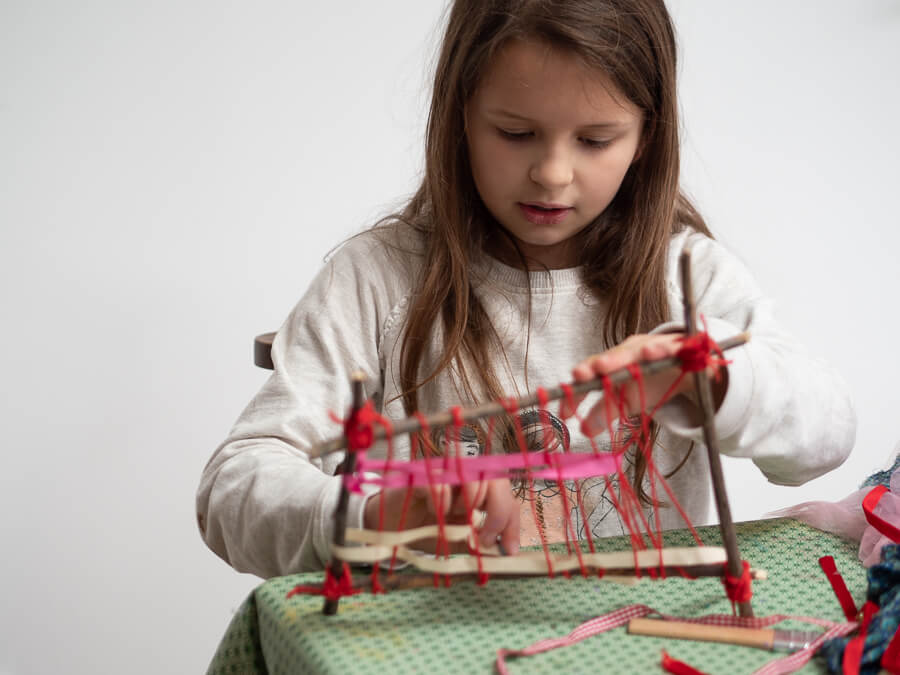
Easy Nature Stick Crafts and activities for kids
Sticks are free, easy and plentiful to find and have so many possibilities! A stick, to a child, can be anything! Sticks can entertain kids and provide fun easy nature crafts to make. Stick crafts and activities are great for keeping kids entertained on a long walk or perfect for playing in the park. We…
READ MOREEASY NATURE STICK CRAFTS AND ACTIVITIES FOR KIDS
Connecting with Nature -MyFavorite Spring Activities
Outdoor Activity Ideas for Spring
Try our Nature Activities for Kids to do in Spring!
Check out our WHOLE MONTH of Spring outdoor activity ideas that we shared with our Facebook Page: Wildhood Adventures.
Go on a bug Hunt
Go pond dipping!
Cut the grass with scissors
Try Hapa Zome (the art of flower bashing!)
Children are Natural Scientists: Create an Invitation to Explore
Spring is such a fun season to encourage outdoor exploration. It's always fun to notice the changes in colors and discovering new plants that are growing and changing just outside in your yard. I really wanted to impress upon you the importance of including play based science experiences in your child’s preschool years. This does not mean memorizing the periodic table or understanding how cells work., but simple and fun experiences that will help them understand our world.

Children are natural scientists. It is our jobs as parents and educators to simply provide opportunities for them to explore. Deborah includes wonderful examples of how you can do this in her book. I’m going to share one with you now.
Create an Invitation to Explore and Use Science Tools
Materials:
various science tools, like:
magnifying glasses
scales
tweezers
spoons
cups
paper
pencils
a container full of water
objects from nature, like: flowers, pinecones. pine needles. leaves, seeds, grass. dirt, sticks, rocks etc
a few boxes {for holding the science tools and the nature objects}
Set up an invitation to explore. Go for a walk and allow your child to collect items from nature. Choose some of the science tools and add them to a box.

Set the box of science tools next to the box of nature objects you collected. You can also set the container of water nearby.
Allow your child to explore the items from nature with the science tools.
Weston chose to look at many of the things through the magnifying glass. We talked about how the magnifying glass made things appear bigger, so we could see them more closely.

Weston explored everything using the tweezers {it was the first time he’s used tweezers and he was delighted to try them out}. He pulled off petals; he picked at grass seeds.

He then tested items in the water. I asked him to predict what would happen. {We’ve explored density before including exploring the density of objects in nature.} Still he said, “I don’t know.” This goes to show you how repetition is necessary.

When the objects floated in the water, Aiden observed, “Nothing happened.” We talked about how the objects were floating on the water instead of sinking. Then he ran off to find an object that would sink. After several tries, he found one.
Be sure to let your child lead the exploration. You can ask questions and provide names for things {build that vocabulary}, but let her be in control of the discoveries.
More Science Explorations for Preschoolers
Classification is an important science skill that children begin on their own. Use these classification activities to work on the skill.
What can you learn from a cardboard tube? Use a giant cardboard tube to explore friction, learn about size, make predictions, and more.
Also try these toddler and preschool science experiments.
30 Kids Garden Crafts & Activities
These kids gardening crafts & ideas are sure to get you excited for warmer weather! For some people, the sight of green grass or tulips popping up means Spring has arrived but for me, it’s the sight of a seed packet! Sometime around the end of February, I realize that Spring is only weeks away …
READ MOREABOUT 30 KIDS GARDEN CRAFTS & ACTIVITIES
9 Plant Activities & Garden STEM Projects
Gardening is such a fun science activity for kids. It allows them to explore botany (the study of plants), habitats and pollination.
It’s also a wonderful family activity as everyone can get involved in planting, growing and harvesting from your own backyard.
Even if you don’t have the time or space for a full-blown garden, the kids would enjoy starting some flowers and veggies in a few posts on your porch.
READ MOREABOUT 9 PLANT ACTIVITIES & GARDEN STEM PROJECTS
23 FREE Printable Gardening Activities
Grab a few of these FREE gardening printables and worksheets and inspire kids to grow something this year! Spring is the perfect time to introduce your kids to gardening! It doesn’t have to be anything complicated — a few seeds in a pot or an herb garden on the windowsill is the perfect starter project. …
Going on a Bug Hunt

With their numbers in serious decline worldwide, insects are in serious trouble. It’s more important than ever to encourage your child’s interest in insects. And since insects have adapted to survive in virtually all habitats: land, in water and in air and all continents including Antarctica, finding them and studying them is one of the easiest nearby nature activities you can do together!
Begin with a book for Littles
We began by reading The Grouchy Ladybug by famous children’s author, Eric Carle. Books are a wonderful way to introduce bugs to kids and this book is always a big hit! We discussed the characteristics of ladybugs and used the book as inspiration for creating our very own ladybug books.

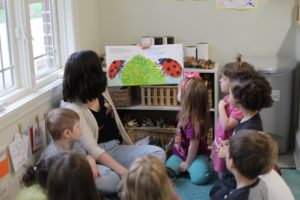
How to make ladybug books
After reading the story together, we invited the children to make their own ladybug books. To set up the experience you will need red construction or cardstock paper and an assortment of washable markers to create with. This activity is a great literacy extension activity as children make connections to the story and build on what they read.

Explore outdoors
After making our ladybug books, we began thinking about places we might find bugs and different kinds of insects we might find in our own backyard. Then, we continued the fun with bugs outdoors! We took our investigative tools and bug catchers and began searching for bugs outside. We looked up, down, and all-around around as we searched around the bases of bushes and trees, turned over logs, explored under rocks, and investigated in piles of dry leaves. The children especially loved digging in the ground. These kids are experts at finding worms!

Benefits of bug hunts
Bug hunts are a wonderful way to explore science concepts outdoors and help children better understand the world around them. Children can make observations and record details of their findings in a nature journal. They learn about techniques and tools needed for catching bugs and have the opportunity to learn about bug habitats as they explore a variety of places that bugs might live outdoors. They can also learn about the different characteristics of insects. Bug hunts help children learn the importance of being kind to mother nature. After catching their bugs they released their bugs back into their home. With Spring upon us, it is the perfect time to explore the outdoors with your bug enthusiasts!

The first step to finding insects is to go out prepared. Bugs may be prevalent, especially in the warmer weather, but armed with wings and speed, they can be tough to catch. Help your child put together a bug collecting kit. You can buy one ready-made or put one together on your own.
A container with holes for breathing.
A net for catching flying insects like butterflies.
It’s also handy to have a smartphone to use an insect-identifying app, take a photo to ID the critter at home or create artwork from later.

Melissa & Doug Magnifying Glass– we like to have a large, plastic magnifying glass so we can see some of the little bugs more closely
Backyard Exploration Critter Case– has always been something the kids pull out when it’s time to catch fireflies or round up a few friends. We’re always sure to let them head back home each evening!
And if you’d like a full set, try the Melissa & Dough Bug Catching Kit – which also includes binoculars and a butterfly net *just be sure to show the kids how to CAREFULLY catch & release a butterfly*

Garden beasts spotter
Be a nature detective! Can you tick off any of these?
Depending on the age of your children prepare them to identify the bug before trying to pick them up. I usually start with beetles that you would find easily in your backyard. Lady bugs and rolly pollies are pretty easy to distinguish and pick up with a gentle touch.
If you have an uneasy feeling that your child will not distinguish the features of a safe bug and an unsafe bug- listen and respect that feeling. There are a few options in adapting the bug hunt to their skills:
Do a side by side hunt with your child
Use plastic or pretend bugs to hunt Work on skills to use the tools until he is more skilled
Work on recognition of the bugs features with other media
Big nets are for older kids that are steady on their feet and can focus on both where their feet are going and the butterflies in the air. However littles can often catch a bug with the same nets made for fish tanks. They are very useful on exploring the animals in fresh water too.
EXPLORING BUGS & CRITTERS WITH KIDS

Do your kids come to you, holding little surprises in their clenched fists? Or shriek that they caught something and want to show you? Though I am not too squeamish, I catch my breath for a second as they uncurl their muddy little fingers, in case their surprise decides to jump or fly away as I lean in. My kids really like to play outside but inevitably, their play will somehow be interrupted by the discovery of “the coolest bug ever,” a frog, a gecko, a baby snake, ants eating a worm, or any other critter. We generally employ a “catch and release” policy, observing the creatures for a bit and then letting them go back into our garden (my daughter says “so they can lay more eggs and we can have even more!”). Here are 4 ways we encourage our budding naturalists to “nature watch,” and learn about the animals and insects in our environment.

1) START IN YOUR OWN BACKYARD AND NEIGHBORHOOD
When you’re out in the garden, get low to the ground and close to the plants. Pick up rocks, planters, and logs and check out the pill bugs and centipedes. When you really stop and look, you might be surprised at how many living organisms there. Even once you have caught a little critter, observe them close-up: how many legs do they have? How many body parts? Do they move quickly or slowly? What sounds do they make? (the cicada above was really loud!) What is their movement and behavior?
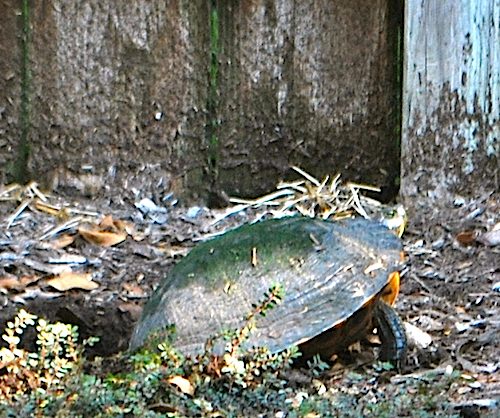
One time we rescued a turtle from the street when it couldn’t get up the curb. I was waiting for my husband to get home to help us take it to the bayou, so I put it in our backyard. We were sitting quietly on a bench watching it, and all of a sudden it started to lay eggs in our mulch!? (seriously) It was the coolest thing for my kids, who will now never forget that turtles come from eggs!
Another time we found a cocoon (chrysalis?) and carefully put it in our aquarium. Imagine our surprise 2 days later when a huge moth emerged! We watched it fly away and everyone hoped we would find its offspring.


2) SET UP A HABITAT FOR A BACKYARD NATURE WATCH
Your best tool to set up a nature watch for your kids is a 5 or 10 gallon aquarium. We keep ours in the backyard and change its contents depending on the season.
Try this simple project: Collect pillbugs (aka “roly-poly bugs”) and create a habitat in a small aquarium using dirt, rotting wood, dead leaves, and keeping it very moist and dark. Roly-polies love to eat potato skins- bury them so they can begin to compost. Make sure not to add in any centipedes- we did, until we read in a book that they are predators of our pillbugs (and unfortunately ate most of ours!). Here’s a short clip that shows the set-up:
Another fun springtime activity is to collect tadpoles and watch them grow into little frogs. We have done this for several years, and the kids love it. Look in shallow water (we always find them in rain puddles), and collect the water too. We would change the water every couple of days with fresh rain or pond water, and feed them chopped, boiled lettuce (let it cool down first). Make sure they have a rock to climb on once they develop legs and lungs! We always let them go in our local bayou and cross our fingers that they survive.

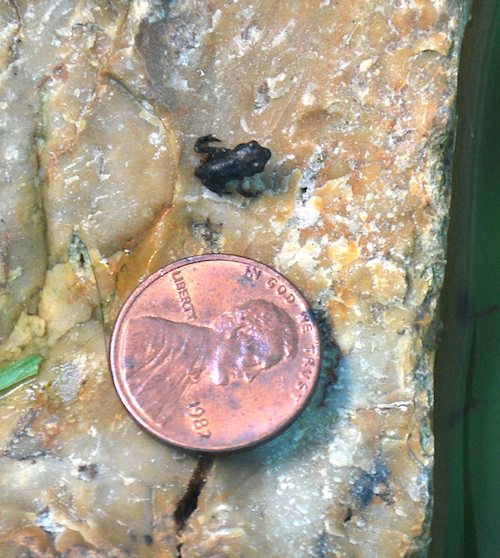
3) NATURE WATCH ON A FIELD TRIP TO A NEARBY NATURE CENTER OR RESERVE
Walk along the edges of ponds and bayous, dig in the dirt, or scoop up a bucket of water to see what critters you can find. Next time you’re at the beach, bring a net or dig in the sand to find different creatures than those in your backyard. Be careful of pincers and mouths- some animals are better to observe from a distance! Whenever we release a creature, we remember to put them back in their home. If you transport them, you might be taking them away from their food or water source, or introducing them to new predators.


Don’t forget nature centers! They frequently have live critters that they will allow kids to observe or pet, with exhibits for learning about local animal life. When else would our kids be able to pet a baby alligator:)??

4) MAIL ORDER BUTTERFLIES TO NATURE WATCH FROM YOUR KITCHEN!
Another great experience for kids is to see the life cycle up close, by ordering live caterpillars from Insect Lore. They will send you 5 caterpillars, which will eat the food they are sent with and soon hang upside down. Sitting and watching caterpillars make chrysalides (that would be the plural of “chrysalis,” which is the pupa form of a butterfly), and then emerge as butterflies was an awesome experience.


My son had learned about a butterfly’s proboscis– the straw-like mouthpiece used for sucking up nectar- and everyone was so excited to be able to see it uncurl as the butterflies sucked up their sugar water! These close-up encounters help the kids expand lessons from school, cementing what they’ve learned and encouraging their curiosity. In addition to caterpillars, Insect Lore also sells ladybug larvae, ants, and more (including a hissing cockroach!?).
We had a “release party” and watched out butterflies flutter away in our garden, teaching the kids that they belong in nature where they can fly freely and begin the life cycle again.


Have I forgotten something? Do you collect bugs with your kids? What are your favorite hands-on nature projects? How do you promote the idea of nature watch?

Help your child scan locations that are fun and safe for searching for insects. Together, brainstorm where you think insects might like to hang out. Think about shelter, shade, water, food, etc. Areas that are great insect hangouts include:
Under rotting logs or leaves
Under stones and boards
In piles of dry leaves
The underside of a leaf
Among flowers
On trees
Deep in the ground
Streams, rivers or ponds
In the grass
You can do this at different times of the year and discuss how the types of insects you find will change with the seasons.
Be sure to see all the books & science activities in the Storybook Science Series too!
Make wild Water Investigations Fun with Cool Science Tools
Science investigations are always more fun when you have the proper tools. Educational Insights has developed a whole line of science tools for kids. Nancy B’s Science Club® features cool science tools and activity journals to get kids excited about science explorations.

Cool Science Tools for Kids
Explore Underwater with an AquaScope
When I first saw the Nancy B’s Science Club product line, I was immediately drawn to the AquaScope. My kids loved playing in creeks and rivers. I knew the AquaScope would be fun for them to explore more of what lives in the water.
Check out the video to see how the AquaScope works.
We took our AquaScope to a local state park. There’s a creek right next to the trail that’s easy to access and explore.

Buy the Nancy B’s Science Club AquaScope on Amazon.
Use the Aquascope after reading Merhorses and Bubbles (book 3 in the Zoey and Sassafras series).
In the book, Zoey creates her own underwater viewer and heads to the stream to observe insects. She discovers the stream is unhealthy and the magical creatures that live there are suffering. It’s up to Zoey and Sassafras to solve the mystery of what’s causing the problem in the stream and save the Merhorses.
Unhealthy streams are a real problem. The insects that live there are a good indicator of stream health. Use the AquaScope to explore the stream bugs in your local creek. Check out this Key to Macroinvertebrate Life in the River from the Missouri Stream Team. The identification chart will help you identify the species you find.

How to go pond dipping
Meet the critters who live in a pond - there will be more than you think!
Collect and Observe with Discovery Lab Pens
The Nancy B’s Science Lab Discovery Lab Pens and Field Journal are another cool science tool that kids will love. The lab pens are actually several science tools in one. The water pen features a liquid specimen vial with volume markings, built-in dropper, and thermometer. It was fun to collect things in the creek.

The land pen features a collection vial, built-in tweezers, and a ruler for specimen observation. Both of the pens have a magnifying glass as well. Below Lily is looking at a purple basil leaf under the magnifying glass.

The discovery lab pens come with a field journal that has some great prompts for exploring. Aiden really liked the scavenger hunt aspect of this page in the journal. He has requested that I make a longer scavenger hunt for him and his friends to do.

Learn More About Trees and Flowers with a Nature Press
The last new product we tested out was the Nancy B’s Science Club Nature Keeper and Tree Diary. It includes a nature press, tweezers, a leaf-shaped craft punch, and an activity journal with science and art activities for every season. The goal of this kit is to explore the trees and flowers around your backyard over the course of the year.
We really liked using the nature press. It has room for lots of flowers or leaves. We chose several plants from our butterfly garden to press.
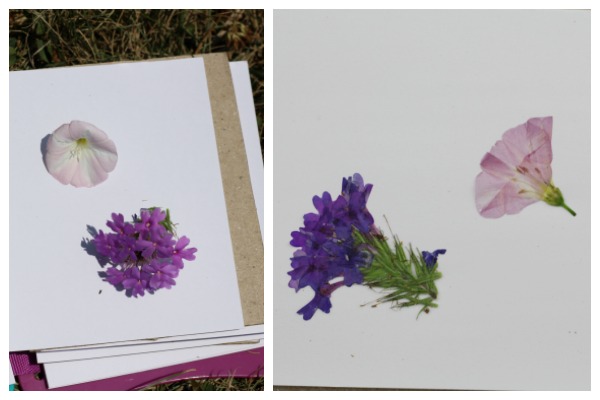
After just one day, the flowers were flattened and were beginning to dry out. It will be fun to use the dried flowers and leaves in art projects once they are completely dry. I’m planning on using them along with the Nature Arts and Craft printable pack from Mother Natured.

Teaching Children about Earth Day
I think Earth Day is an important celebration and reminder to ourselves that we need to take care of our Earth. …
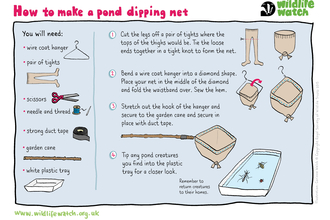
Make a pond dipping net
Reuse and recycle for this one!
Science & Water Activities for a Day at the Pond
One thing I really enjoy during the summer are days out with the kids! We like to explore almost anywhere but since we have a summer budget, finding free places to visit is always a plus since we like to get out a lot during summertime. You don’t have to travel very far for the …
More Science Explorations for Kids
Set up a simple science lab for kids

Backyard Bird Scavenger Hunt
Let’s head outside to look for birds in the neighborhood. Print our backyard bird scavenger hunt to mark off what birds you …

Spring nature spotter
Be a nature detective! Can you tick off any of these?

Amphibians spotter
Be a nature detective! Can you tick off any of these?

Fish spotter
Be a nature detective! Can you tick off any of these?

Baby bird spotter
Be a nature detective! Can you tick off any of these?

Garden butterfly spotter
Be a nature detective! Can you tick off any of these?

Countryside spotter
Be a nature detective! Can you tick off any of these?

Garden birds spotter
Be a nature detective! Can you tick off any of these?

Ducks spotter
Be a nature detective! Can you tick off any of these?

Spring flower spotter
Be a nature detective! Can you tick off any of these?

Ladybird spotter
Be a nature detective! Can you tick off any of these?

Go on a litter pick
Keep animals safe by clearing up rubbish that they could get trapped in or eat.

Ducks spotter
Be a nature detective! Can you tick off any of these?

Make a mini pond
Ponds are great for wildlife! Create a home for damselflies, frogs and toads.

Wallchart: spring things
Have you spotted any of these? This wallchart is yours to print out and keep!

Autumn leaf spotter
Be a nature detective! Can you tick off any of these?

Fungi spotter
Be a nature detective! Can you tick off any of these?

Woodland spotter
Be a nature detective! Can you tick off any of these?

Nature's music
Turn natural objects into musical instruments.
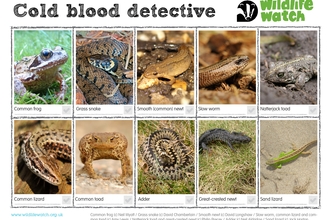
Amphibians spotter
Be a nature detective! Can you tick off any of these?

Make your garden insect-friendly
Get your garden buzzing all year round!
Parts of a Dandelion Nature Exploration
How to Attract Fireflies at Inspiration Laboratories











